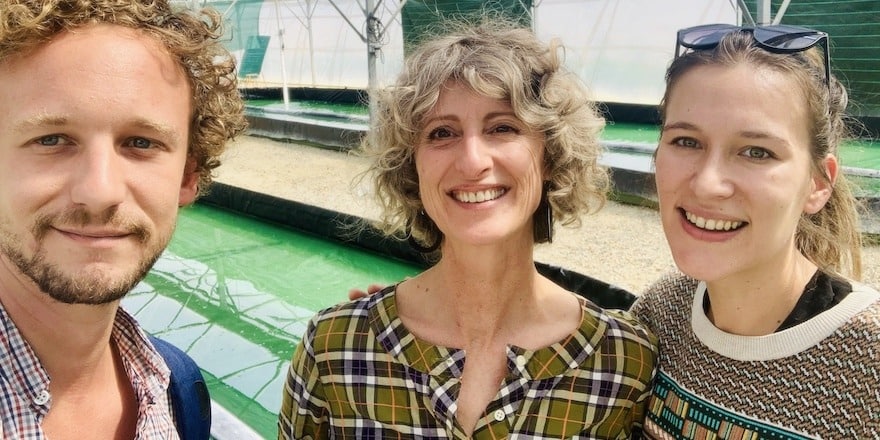A spirulina farm amidst tomatoes in Lot-et-Garonne
A change of scenery after cocoa in the Amazon and raw chocolate in New York. We stop at a typical inn in the Lot-et-Garonne where we indulge in duck breast and Marmande wine, and head towards Montpouillan, an agricultural village with a population of no more than 700.
We called Laurence last minute, the day before for the next day. She welcomes us to the family farm with a beaming smile, good coffee, and some pieces of spirulina chocolate. She grew up here while her parents, market gardeners, cultivated tomatoes. She established her own farm, the Spiruline des Frangines, in 2013 (see her shop, to buy spirulina online).
She tells us her story…

From a nomadic adventurer to a committed spirulina farmer
After traveling the world for 20 years, from the United States to India, gaining a wealth of experiences and encounters, she decided to return to her native land. And to make something of her father’s unused greenhouses.
Laurence first consumed spirulina in the early 2000s after overcoming a brain tumor – we were won over by her strong character and now we are truly impressed. The super algae helped her regain her footing and detox her body following the intense treatments she had undergone.

One morning, years later, while opening the doors of a climbing gym where she worked in Montpellier, Laurence came face to face with a spirulina producer at an artisan market. There, she decided to learn everything about spirulina and its cultivation, cycling daily to this spirulina farmer who opened his farm and knowledge to her.
In 2013, Laurence set up her first spirulina basins at the family farm in Montpouillan. Besides the existing greenhouses, she had a precious resource: water. It is drawn directly from a natural spring belonging to the farm.
Why is Laurence a committed spirulina farmer? First, because spirulina cultivation has a low environmental impact – producing a protein-rich and iron-rich food with little space, little water, little energy, unlike cattle farming for example.
Also because she chose to grow her spirulina in Salies-de-Bearn salt, a pure salt naturally present in the nearby Pyrenees.

Finally, her spirulina is cold-dried below 40°C, so it remains raw (alive!) and retains all its good nutrients.
What exactly is spirulina?
Spirulina is simply one of the most exceptional foods around. This cyanobacteria, which we tend to call algae, is one of the earliest forms of life on earth, about 3.5 billion years old.

It develops in the wild in alkaline lakes of warm regions in America, Africa, and Asia. It was, for instance, consumed by the Aztecs at Lake Texcoco, and still today at Lake Chad by the Kanembou people.
Spirulina is a unique source of proteins, vitamins, iron, and other minerals. It may be the most powerful of what we call superfoods, and on top of that, its cultivation is eco-friendly.
Today, it is used in humanitarian programs to combat malnutrition. But not only that, NASA also uses it during space missions, and plans to cultivate it on Mars. Meanwhile, we can easily obtain it (in powder, flakes, and tablets) directly from producers like Laurence, or in organic stores.
From cultivation to our plate, how is spirulina made?
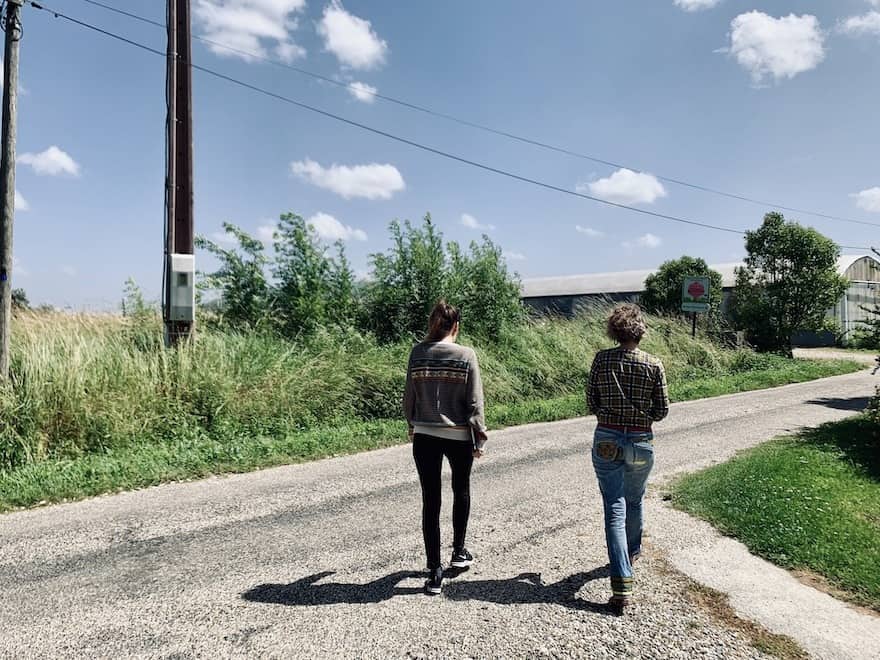
It’s June, one of the busiest months for harvesting! The harvest takes place from April to October, when sunlight allows spirulina to achieve optimal photosynthesis.
We leave the cozy atmosphere of Laurence’s living room to head to the greenhouses. Nine basins follow one another, and we are immediately hypnotized by the marbled green water flowing before our eyes. Laurence started with a strain collected from a colleague, which she nurtured with iron and other minerals, NPK fertilizer (nitrogen, phosphorus, potassium)… The sun did the rest!
“The water from our spring is my greatest treasure. To cultivate spirulina, we don’t need a lot of water, but good water.”
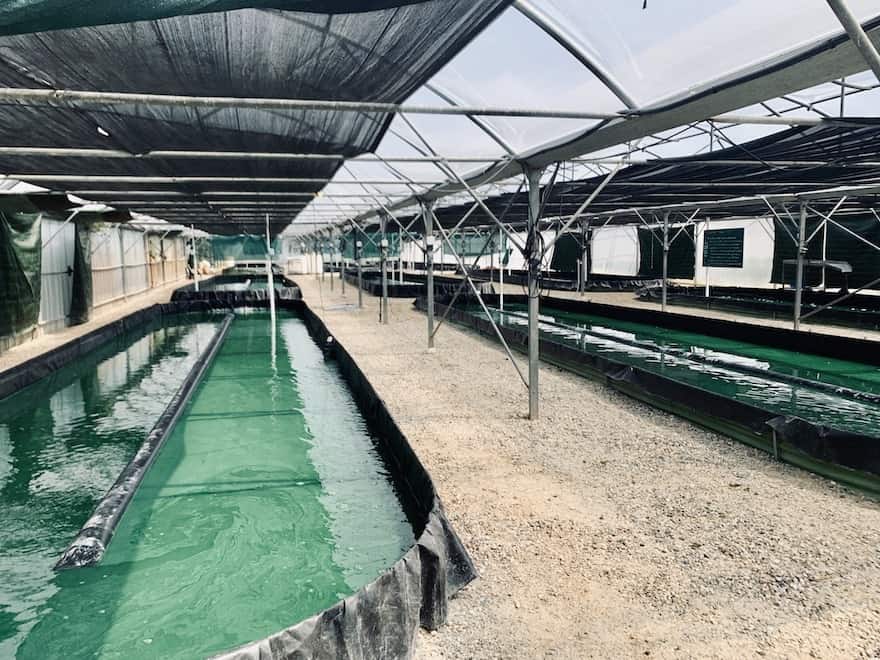
Laurence harvests spirulina in the morning. She works alone, sometimes with a seasonal friend. The greenhouses provide a warm environment, conducive to the good regeneration of cyanobacteria.
A universe in a drop of water! Here’s what happens in the spirulina basin: the cyanobacteria move around, reproduce… Their spiral shape gave the superfood its name 🙂
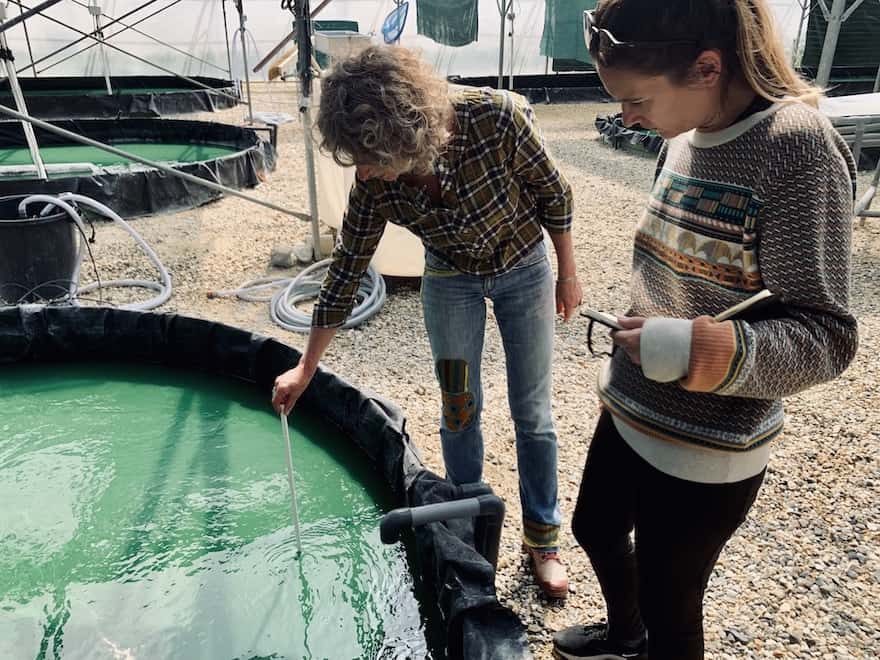
So, how does it actually work? We measure the density of the basins with a Secchi disk. The densest basins are ready to be harvested, while the others are left alone to allow the spirulina to regenerate properly.

In the adjacent laboratory, the tap corresponding to the selected tank is opened. A very fine mesh allows for filtering the liquid, a green cream forms on its surface. You’ll need a bit of imagination for the rest because it’s the afternoon and the harvest has already taken place 🙂
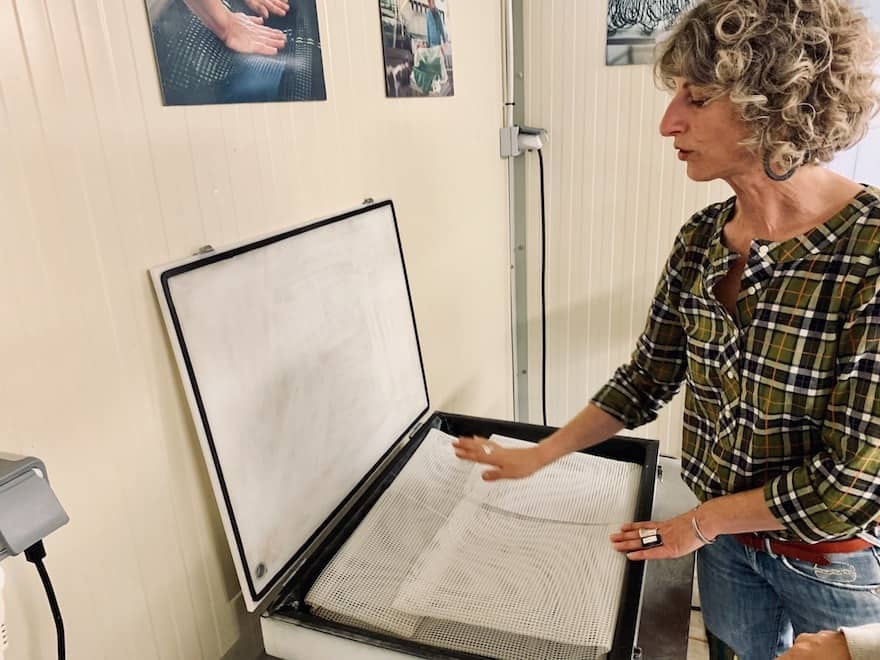
The biomass is placed in a box to be pressed. Of course, Laurence wears gloves, everything is done handcrafted and according to regulations!
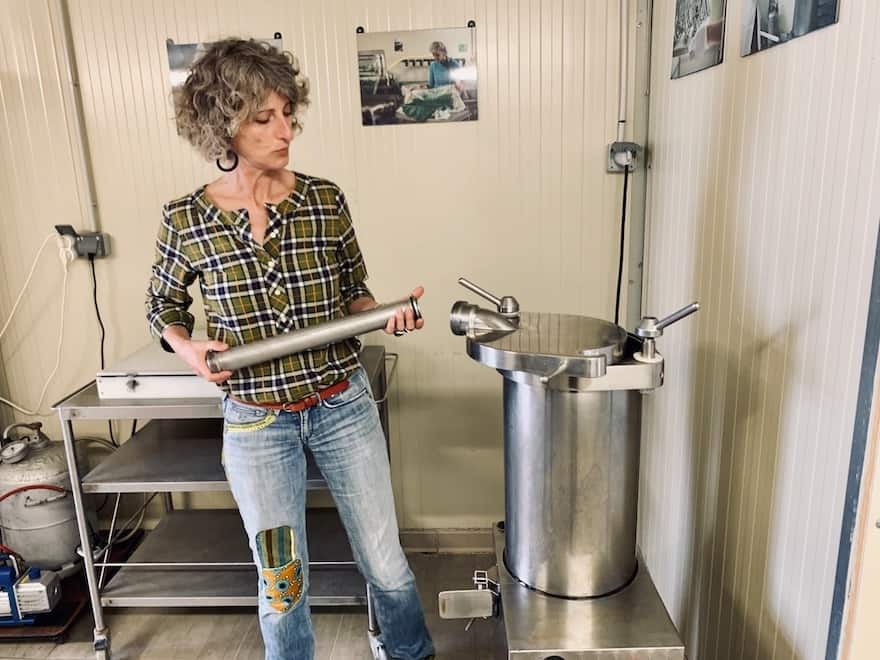
Then the paste obtained is put into this odd machine, a former sausage stuffer converted into a spirulina spaghetti machine! The paste is then transformed into long strands.

The spaghetti then spend the whole day on a tray in a dryer. Its temperature does not exceed 40°C: this is what we call cold drying. The nutrients and qualities of spirulina are preserved! It remains alive!!!
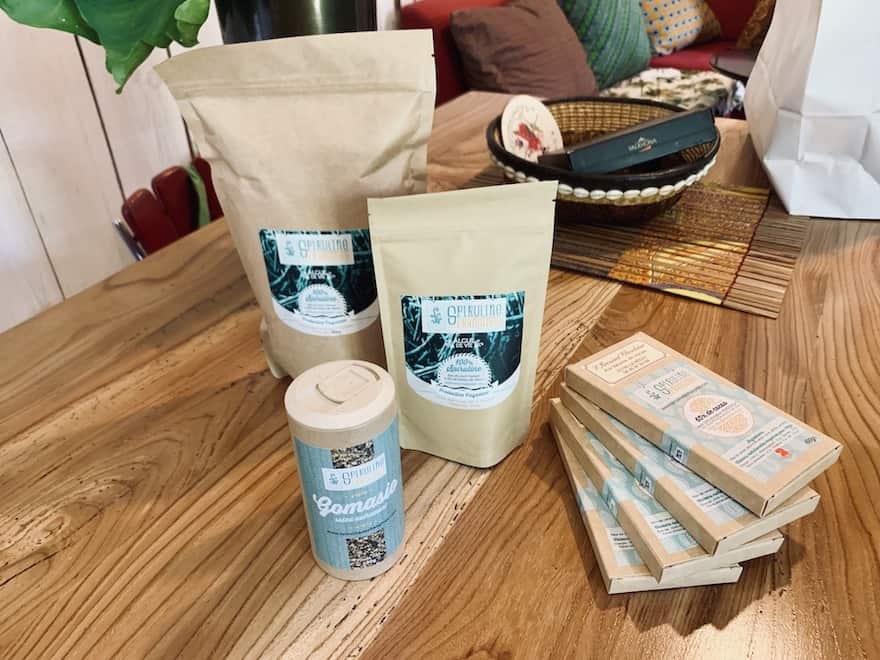
Laurence then crushes her spirulina by hand to form flakes, sends a sample to the lab for bacteriological analysis, and packs it in bags. She also loves developing new products: spirulina chocolate (collaboration with a local master chocolatier), spirulina gomasio…
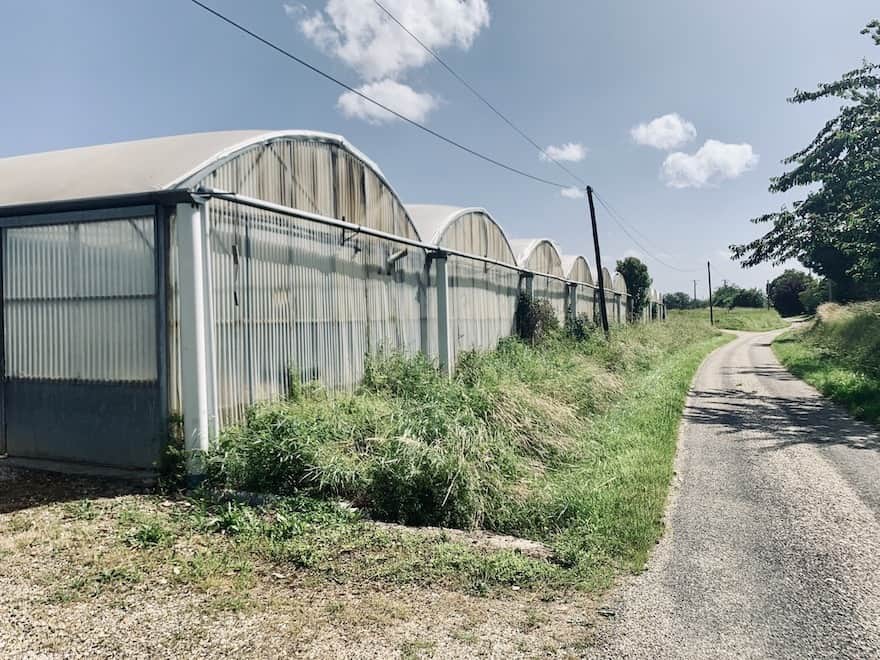
“Spirulina, it’s a daytime affair!”
This is a day in the life of spirulina. As for Laurence, she also handles administration, accounting, communication, doing markets, managing online orders (30% of her sales)… She also shares her expertise with young people wanting to venture into spirulina, and travels regularly to Africa to develop collaborations.
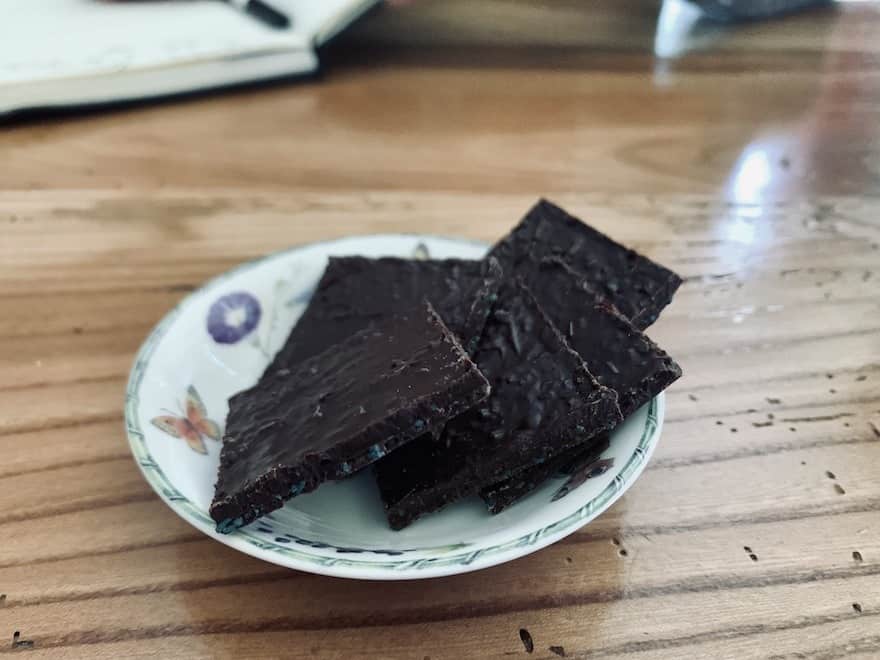
French spirulina growers are typically people in career transition and committed to cultivating a healthy and eco-friendly product. Their operations are artisanal, their approach sustainable, often in a model of farms with a short circuit of direct sale to the consumer.
To understand why French spirulina is not (yet) organic, read our article. French spirulina growers, grouped in a federation of over 150 producers, are considering developing their own label, “French artisanal spirulina”, with an eco-friendly charter.
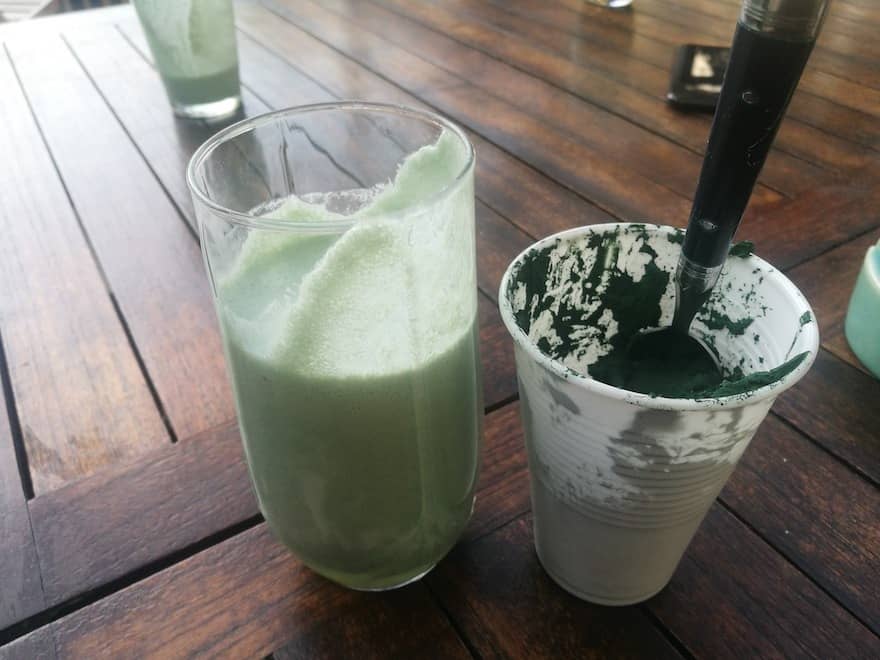
A pleasure to see firsthand how it’s done, and a wonderful encounter as well: we are eager to continue exploring the world of superfoods! And experimenting with our own recipes… With the fresh spirulina kindly offered by Laurence, we make a delicious Piña Colada for the aperitif 😉


